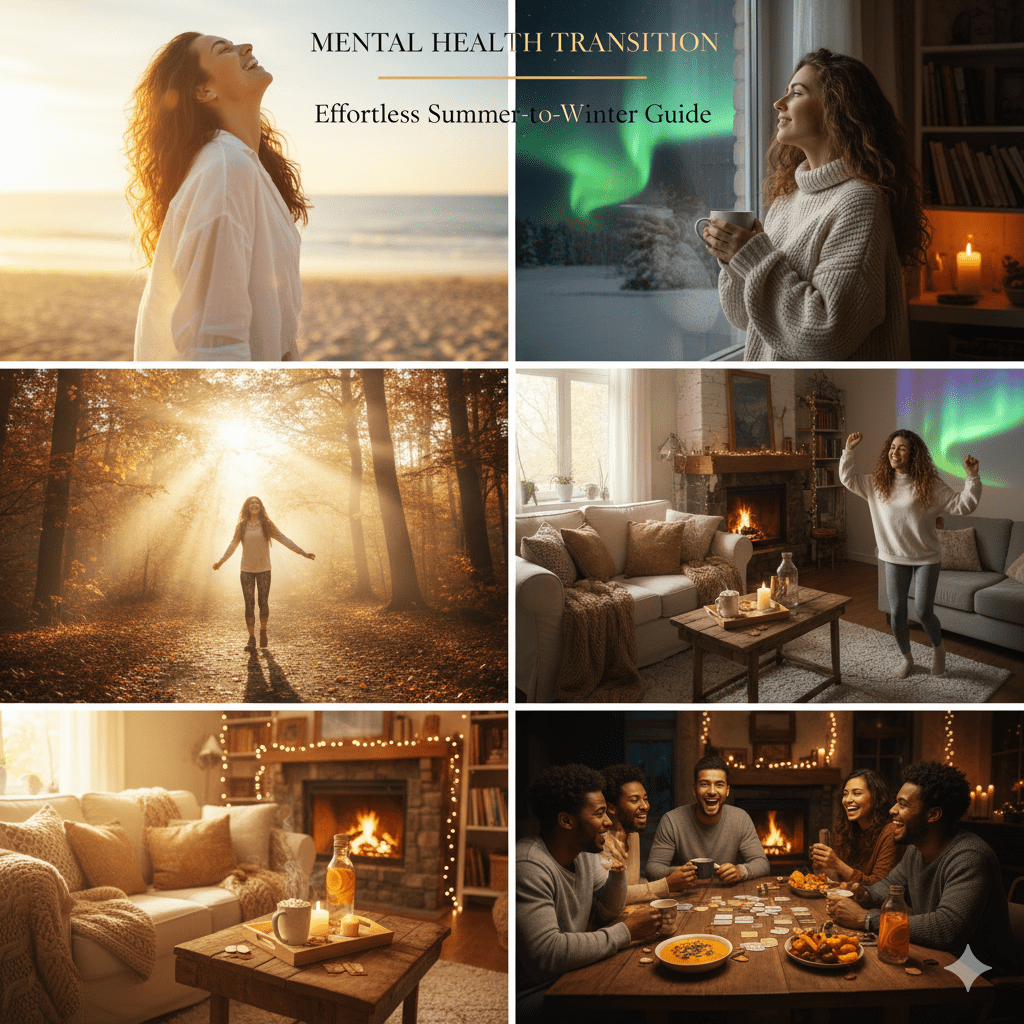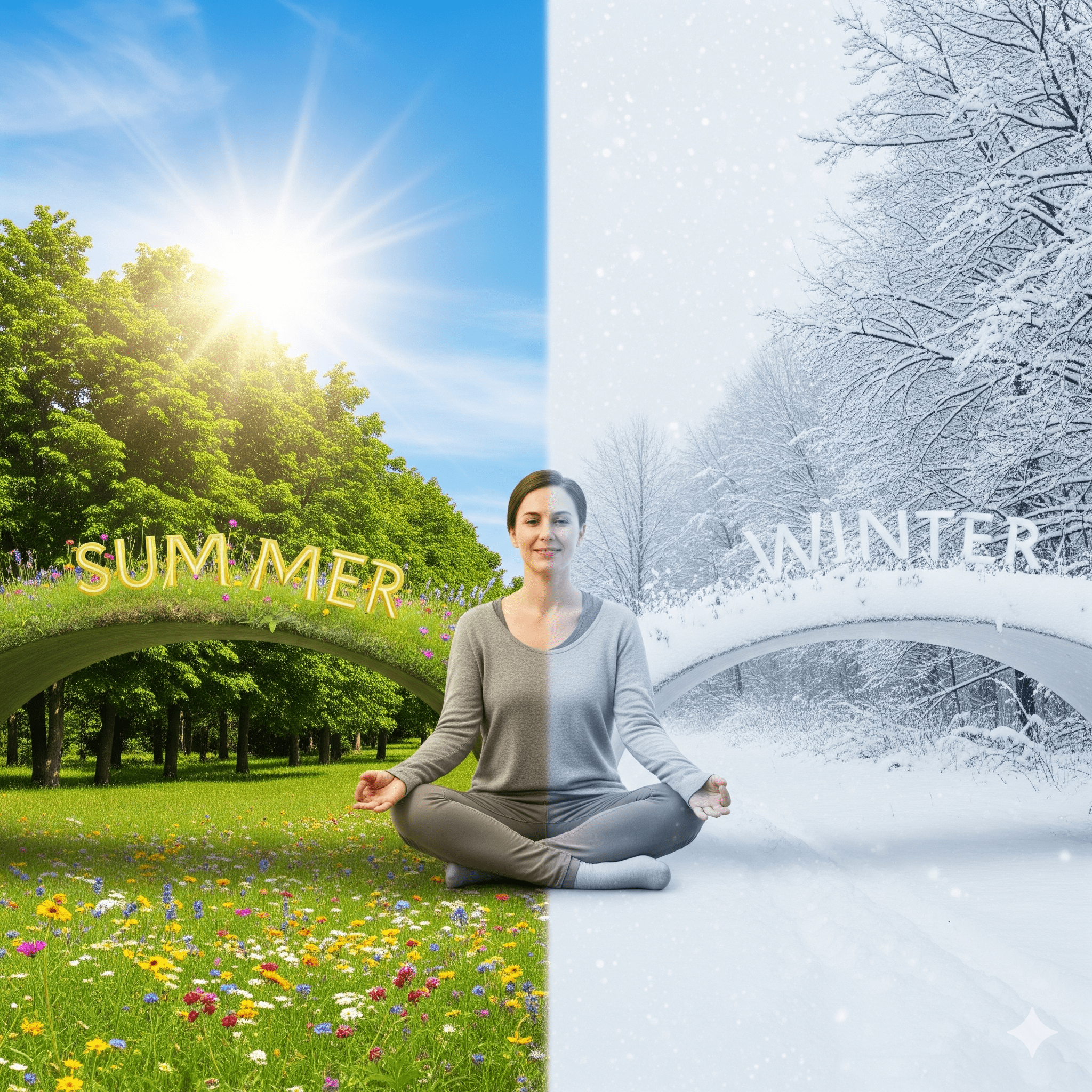As the long, sun-drenched days of summer give way to the crisp, shorter days of autumn and the quiet stillness of winter, it’s common to feel a shift in more than just the weather. Our energy levels, social habits, and even our moods can change with the seasons. This seasonal shift can be challenging, but with a little intention not only you can navigate it smoothly but also have a healthy transition from summer to winter.
A Global Phenomenon: Where This Transition Occurs
This distinct seasonal shift from a warm, bright summer to a cold, dark winter is a reality. A significant portion of the world’s population living in temperate climates, away from the equator.

In the Northern Hemisphere, where the days are currently getting shorter (from September to December), this transition is felt across:
- North America: Virtually all of Canada and the northern and central United States.
- Europe: The entire continent, from the United Kingdom and Ireland to Scandinavia (Norway, Sweden, Finland), and across countries like Germany, France, Poland, and Russia.
- Asia: Northern and central parts of the continent, including Japan, South Korea, and northern China.
It’s important to remember this cycle is reversed in the Southern Hemisphere. Countries there experience their own summer-to-winter transition from March to June. This includes places like:
- South America: Argentina, Chile, and Uruguay.
- Oceania: New Zealand and the southern parts of Australia (Victoria, Tasmania, etc.).
- Africa: South Africa.
If you live in one of these regions, you’re likely very familiar with this annual shift. Now, let’s explore how to manage it.
Embrace the Light
One of the biggest challenges of the fall and winter months is the reduced exposure to natural sunlight, which can impact our circadian rhythms and mood. Make a conscious effort to soak up the sun.
- Take a Morning Walk: Even 15-20 minutes of sunlight shortly after waking up can help regulate your internal clock and boost serotonin levels.
- Position Yourself Near a Window: Whether you’re working from home or in an office, try to set up your space near a window to maximize daylight exposure.
Create a Cozy Sanctuary
Lean into the “cozy season” by making your home a place of comfort and rest. The Danish concept of “hygge” (a quality of coziness and comfortable conviviality) is perfect for this.
- Warm Lighting: Use warm-toned light bulbs, candles, or fairy lights to create a soft, inviting ambiance in the evenings.
- Comforting Textures: Incorporate soft blankets, plush pillows, and warm rugs into your living space.
Stay Active
The urge to hibernate is real, but physical activity is a powerful antidepressant. You don’t have to run a marathon; consistent, moderate movement is key.
- Embrace Seasonal Activities: Go for a crisp hike to enjoy the fall colours, try ice skating, or even have a brisk snowball fight.
- Try an Indoor Workout: Explore online yoga classes, a new gym, or simply put on some music and have a dance party in your living room.
Nourish Your Body and Mind
What you eat can have a direct impact on how you feel. The fall and winter seasons offer a wonderful opportunity to enjoy nourishing, warming foods.
- Eat Seasonally: Enjoy hearty soups, stews, and roasted root vegetables that are not only delicious but also packed with nutrients.
- Stay Hydrated: It’s easy to forget to drink water when it’s not hot out, but proper hydration is crucial for brain function and energy levels.
Shorter days and colder weather can lead to social isolation. Be intentional about staying connected with friends and family.
- Schedule Regular Check-ins: Plan a weekly phone call, a coffee date, or a game night.
- Host a Cozy Get-Together: Invite friends over for a movie marathon, a potluck dinner, or to simply enjoy a warm drink and good conversation.
By proactively incorporating these simple practices into your routine, you can not only manage the mental health challenges of the changing seasons but also find joy and comfort in the unique beauty that fall and winter have to offer.
Important Note: The tips in this guide are for general well-being, they are not a substitute for professional medical advice. If you think you may be experiencing Seasonal Affective Disorder (SAD), please speak with a doctor or mental health professional. It always good to get a proper diagnosis and discuss the treatment options.
Read more blogs at : Okjango.com


